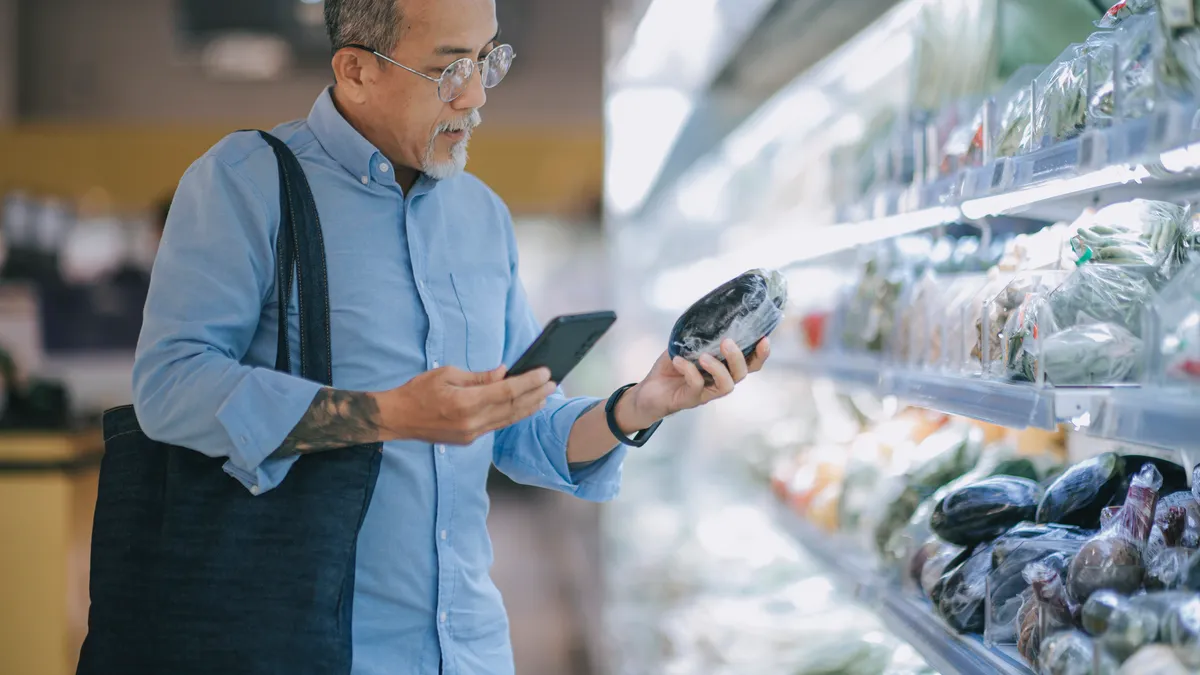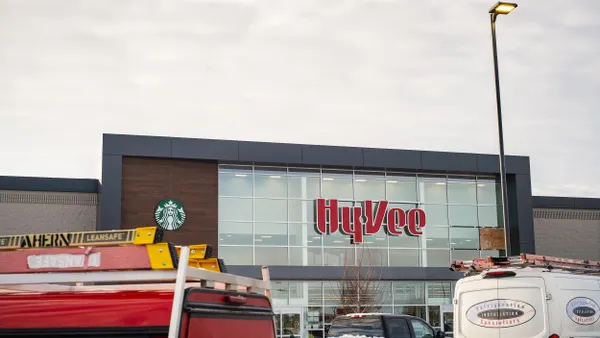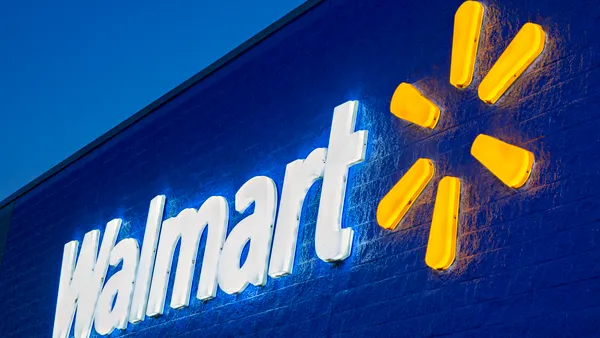Dive Brief:
- In 2022, 50% of online shoppers bought groceries online every two weeks or more — up from 41% who said the same in 2020 before the pandemic, according to a new omnichannel shopping report from the Food Industry Association.
- The recent surge of online shopping adoption coupled with the increasing variety of e-commerce buying options marks a “dramatic upheaval” for the food buying landscape, FMI spokesperson Heather Garlich said at the trade group’s recent press conference on the report.
- As consumers mix and match buying in-person and online, grocers have several areas they can address to improve hybrid shopping, FMI noted.
Dive Insight:
The rise of hybrid retail has shifted consumer expectations for both online and in-store shopping, said Garlich, who is senior vice president of communications, marketing, and consumer and community affairs for the trade group. There are several steps retailers can take to meet those expectations and improve inefficiencies, FMI noted.
Online shopping can help customers save time, more easily compare prices, discover new products and avoid the in-store checkout process. For online grocery shopping, 68% of surveyed consumers said they look at product reviews, 65% said they use list-building tools based on prior purchases and 62% filter for specific product attributes, per the report.
But e-commerce lacks the sensory experience customers still highly value, and they tend to have less trust in others to shop for them, the trade group noted. Quality of products remains a concern with e-commerce, with only 17% of shoppers saying they get better quality items online, compared to 43% who said the same for in-store purchases, according to FMI.
Shoppers surveyed by FMI reported spending 19% of their weekly grocery budget online — 4 and 8 percentage points, respectively, higher than those surveyed in 2020 and 2019 reported.
“This increase in online grocery spend is largely due to the overall growth in online shoppers, not necessarily that those shoppers are spending more online,” Garlich said.
FMI conducted its consumer survey in February and received input from just over 2,000 respondents. This is the third installment of the trade group’s series on U.S. grocery shopping trends.
In-person shopping has remained the most popular buying option for consumers because it gives them more control over their experience. However, stores have long struggled with the checkout experience for customers, and as shoppers become more accustomed to buying online, they want an easier process to buy their items.
“On in-store trips, digitally experienced shoppers now expect this step to be completely frictionless, if not completely invisible. However, shoppers also expressed frustration in the online checkout process as being cumbersome, making checkout, in general, a step that shoppers increasingly are expecting to be more efficient regardless of how or where they shop," Doug Baker, vice president of industry relations for the trade group, said at the press briefing.
Scan and go, Baker noted, is a way grocers can potentially speed up the checkout process in stores and cut down on lines. Numerous retailers are also adding self-checkout terminals to their stores, and manufacturers of these systems are innovating to make self-checkout as accurate and frictionless as possible.
During the press conference, Baker outlined four ways grocers can make hybrid shopping better: give customers more control over substitutions; expand personal shopper offerings; simplify the checkout process; and improve integration between a retailer’s app, website and in-store experience.
Personal shoppers, who develop relationships with customers, can help relieve shopper anxiety, Baker said.
Grocers have opportunities to extend the benefits of online and in-store across channels. For example, grocers can look to make the online personalization more readily available for in-store shopping via in-app product recommendations. Baker noted customers want to leverage technology while shopping at stores, giving grocers chances to blend online and in-store experiences.
“Ultimately, it's: How do we use technology to continue to align with the shoppers evolving priorities?” Baker said.












